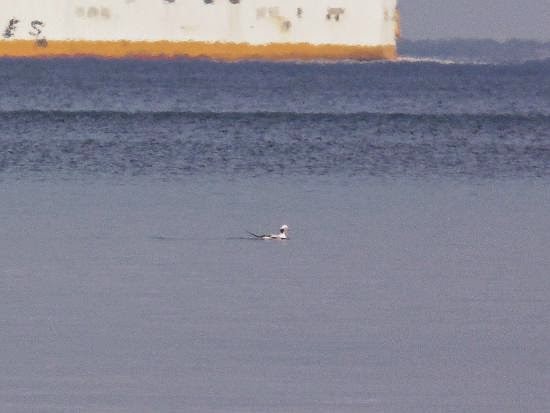An especially large expanse of sand ripples.
We did pretty well looking for teeth, 39 in all. Nothing ginormous, but a couple worthy of being put on the kitchen window shelf until they are displace by a better tooth of the same type.
A mother/daughter team of fossil hunters.
They turned out to be newbies, and were impressed by our collection at that point, and we chatted while the dog chewed the landscape. We gave them some hints as to how to proceed, but there's really no substitute for hours of looking.
It was only after we passed them that Georgia found the prize of the day, a tooth that will likely occupy the top shelf all year, this Cow Shark tooth.
A big one going by out front. It sent a nice wake out, which reached us a few minutes after its passage. Do you see the duck? I didn't when I took the picture.
Here, I'll help. An Old Squaw, which has been renamed the Long-tailed Duck in a fit of political correctness. One of the more common winter ducks here, they're easier to see from boats because they seem to forage out in deeper water than the Buffies.
- The Long-tailed Duck is one of the deepest diving ducks, and can dive as deep as 60 meters (200 feet) to forage.
- Of all diving ducks, the Long-tailed Duck spends the most time under water relative to time on the surface. When it is foraging it is submerged three to four times as much as it is on top of the water.
 We found this hawk sitting in a tree by the harbor. I don't know what it is yet.
We found this hawk sitting in a tree by the harbor. I don't know what it is yet.








No comments:
Post a Comment